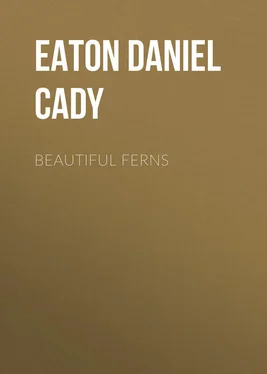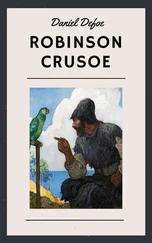Daniel Eaton - Beautiful Ferns
Здесь есть возможность читать онлайн «Daniel Eaton - Beautiful Ferns» — ознакомительный отрывок электронной книги совершенно бесплатно, а после прочтения отрывка купить полную версию. В некоторых случаях можно слушать аудио, скачать через торрент в формате fb2 и присутствует краткое содержание. Жанр: foreign_antique, foreign_prose, на английском языке. Описание произведения, (предисловие) а так же отзывы посетителей доступны на портале библиотеки ЛибКат.
- Название:Beautiful Ferns
- Автор:
- Жанр:
- Год:неизвестен
- ISBN:нет данных
- Рейтинг книги:3 / 5. Голосов: 1
-
Избранное:Добавить в избранное
- Отзывы:
-
Ваша оценка:
- 60
- 1
- 2
- 3
- 4
- 5
Beautiful Ferns: краткое содержание, описание и аннотация
Предлагаем к чтению аннотацию, описание, краткое содержание или предисловие (зависит от того, что написал сам автор книги «Beautiful Ferns»). Если вы не нашли необходимую информацию о книге — напишите в комментариях, мы постараемся отыскать её.
Beautiful Ferns — читать онлайн ознакомительный отрывок
Ниже представлен текст книги, разбитый по страницам. Система сохранения места последней прочитанной страницы, позволяет с удобством читать онлайн бесплатно книгу «Beautiful Ferns», без необходимости каждый раз заново искать на чём Вы остановились. Поставьте закладку, и сможете в любой момент перейти на страницу, на которой закончили чтение.
Интервал:
Закладка:
Daniel Cady Eaton
Beautiful Ferns
ADIANTUM PEDATUM, Linnæus.
American Maiden-hair
Adiantum pedatum: – Root-stock creeping, scaly, and copiously rooting; stalks scattered, a foot or more high, dark-brown and polished, forked at the top; fronds six to fifteen inches broad, membranaceous, smooth, spreading nearly horizontally, composed of several (six to fourteen) slender divisions radiating from the outer side of the recurved branches of the stalk, and bearing numerous oblong or triangular-oblong short-stalked pinnules having the lower margin entire and often slightly concave, the base parallel with the polished hairlike rachis, the upper margin lobed or cleft and bearing a few oblong-lunate or transversely linear reflexed involucres; sporangia on the inner surface of the involucres (as in all Adianta ), borne on the extended apices of the free forking veinlets, which proceed from a principal vein closely parallel to the lower margin of the pinnule.
Adiantum pedatum , Linnæus, Sp. Pl., p. 1557. – Thunberg, Flora Japonica, p. 339. – Swartz, Syn. Fil., p. 121. – Schkuhr, Krypt. Gew., p. 107, t. 115. – Willdenow, Sp. Pl., v., p. 438. – Michaux, Fl. Bor. Am., ii., p. 263. – Pursh, Fl. Am. Sept., ii., p. 670. – Torrey, Fl. of N. Y., ii., p. 487. – Gray, Manual. – Ruprecht, Distrib. Crypt. Vasc., in Imp. Ross., p. 49. – Hooker, Sp. Fil., ii., p. 28. – Brackenridge, Filices of the U. S. Expl. Exped., p. 100. – Eaton, in Parry’s Exped. to Japan, ii., p. 329. – Maximowicz, Primitiæ Fl. Amurensis, p. 341. – Mettenius, Fil. Hort. Lips., p. 47; Prolusio Fl. Japon. in Ann. Mus. Bot. Lugd. – Batav., iii., p. 171. – Hooker & Baker, Syn. Fil., p. 125. – Milde, Fil. Eur. et Atl., p. 31. – Keyserling, Gen. Adiantum, in Mem. Acad. Petrop., ser. vii., xxii., No. 2, pp. 5, 28.
Adiantum Americanum , Cornutus, Canad. Pl. Hist., p. 7, t. 6 (1635).
Maiden Hair, or Cappellus veneris verus , Josselyn, New Englands Rarities Discovered, p. 55 (1672).
Adiantum fronde supra-decomposita bipartita , foliis partialibus alternis , foliolis trapeziformibus obtusis , Gronovius, Flora Virginica (1739), p. 123. (For other ancient references see Linnæus, as quoted above.)
Adiantum boreale , Presl, Tent. Pterid., p. 158.
Hab. – In rich, moist woods, especially among rocks. Common from New Brunswick and Canada southward to Central Alabama, Professor Eugene A. Smith, and westward to Lake Superior, Wisconsin, and Arkansas. Also in Utah, California, Oregon, British Columbia, the islands of Alaska, Kamtschatka, Japan, Mantchooria, and the Himalayan provinces of India. Ruprecht speaks of specimens from Newfoundland, and Professor Gray informs me that it exists in De La Pylaie’s collection from that island.
Description. – The root-stock is elongated and creeping. It is about the diameter of a goose-quill, is covered with minute ovate scales, roots copiously from beneath and along the sides, and produces fronds from the right and left sides alternately. The stalks are usually from a foot to fifteen inches high, and from half a line to a line in thickness. When very young, they bear a few scattered narrow scales; but these soon fall off, leaving minute pointed scars. The mature stalk is roundish in section, the convexity being greatest on the side which corresponds to the under surface of the frond. The two convexities, anterior and posterior, are separated by two obscure angles or ridges, which extend the whole length of the stalk. The anterior, or flatter, convex surface is nearly black, while the other side is a dark purplish brown. The fibro-vascular bundle is U-shaped near the base of the stalk; but higher up it is more like a broad, open V; and just below the forking of the stalk it separates into two portions. The two branches of the stalk diverge at an angle of about fifty degrees, and rise obliquely, gracefully recurving till they nearly meet again. From the outer side of the curve each branch sends out from two to seven slender diverging branchlets, which are the rachises of the pinnæ. The branchlets nearest the forking of the stalk are from four to fifteen inches long, those more remote successively shorter. Thus the whole frond is from five or six to fifteen or eighteen inches broad, and, while somewhat funnel-form in the centre, radiates nearly horizontally towards the circumference. A pressed specimen can give but little idea of its graceful position.
The pinnules, or leaflets, are from six to twelve lines long, and three or four broad, and are placed alternately on the rachises of the pinnæ. They are very numerous, seldom fewer than twelve on each side of one of the middle (or lower) rachises, and in large fronds sometimes as many as forty on each side. The outer rachises bear fewer and fewer pinnules, and the outermost of even a very large frond will not have more than eight or ten on each side. They are attached to the rachis by a very short and slender stalk. Their usual form is dimidiate-oblong; that is, they appear as if cut in two longitudinally, and the lower half removed, so that the lower edge is entire, and straight, or often slightly hollowed; the base, or edge nearest the rachis, is also straight and entire; it is parallel with the rachis, or even overlaps it a little; the upper edge is more or less lobed or incised, but in general nearly parallel with the lower, and the end is rounded and slightly lobed. The point of attachment is, of course, at the angle between the lower and basal edges. The terminal pinnule of each pinna, and the basal one, which, indeed, very often proceeds from one of the recurved branches just below the origin of the pinna, are broadly cuneate or transversely oblong in shape, the two sides which meet at the point of attachment being equal; and the few pinnules near the basal one are shorter and more triangular than the middle ones. The texture is delicately membranaceous, but elastic; the color is a lively green, and both surfaces are very smooth. The upper surface appears to be destitute of stomata; and this may be the reason why water will not adhere to the pinnules, but either falls off, or stands in spheroids ready to fall. The veins are free: in the symmetrical basal and apical pinnules the veinlets fork repeatedly from the very base; but in the oblong middle pinnules there is a faint principal vein running close to the lower edge; and from this the veinlets diverge obliquely, and fork about three times before reaching the superior margin. The incisions of the superior margin are usually very narrow, and extend only to about one-third of the breadth of the pinnule; but in some specimens from California and Oregon they are wider and considerably deeper. The lobes are from four to six or seven in number: in sterile fronds they are minutely toothed at the end; but in the commoner fertile fronds they are reflexed and changed in character, so as to form somewhat crescent-shaped or transversely elongated involucres of a pale-brownish color. The tips of the veinlets extend into these involucres, and bear the sporangia on the under or inner surface. In this peculiarity is the essential generic character of Adiantum . The spores of this species are spheroid-tetrahedral, the three radiating angles marked with slender vittæ, or bands. They are mature in the latter part of summer; but the fronds remain until frost, often changing from green to variegated shades of brown.
There do not seem to be any well-marked variations in this fern. Ruprecht has a “var. Aleuticum ,” the Ad. boreale of Presl, separated mainly on account of its smaller size and fewer parts.
The genus Adiantum contains eighty-three species, according to Mr. Baker’s estimate; but this number is reduced to sixty-seven by the more recent and very careful recension of Keyserling. The species vary in form from a simple and reniform frond an inch or two in diameter to others with ample tripinnate and even quadripinnate fronds. The species with distinctly bipartite and radiated fronds are Ad. patens , hispidulum , and fiabellulatum . A. patens is found in Mexico and Central America. It is a smaller plant than A. pedatum , and has deeply-sunken reniform involucres. The other two occur in South-eastern Asia, the hispidulum extending to Africa and to New Zealand, and the flabellulatum to Japan: the former has hispid surfaces and small roundish involucres; and the latter has rusty-fibrillose rachises, coriaceous pinnules, and transversely oblong sub-confluent involucres. Ad. patens follows the form and branching of our fern very closely; but the two Old-World species often depart from it, and show a tendency to develop branches on one or other of the longest pinnæ, thus indicating an approach towards a pyramidal structure of the frond.
Читать дальшеИнтервал:
Закладка:
Похожие книги на «Beautiful Ferns»
Представляем Вашему вниманию похожие книги на «Beautiful Ferns» списком для выбора. Мы отобрали схожую по названию и смыслу литературу в надежде предоставить читателям больше вариантов отыскать новые, интересные, ещё непрочитанные произведения.
Обсуждение, отзывы о книге «Beautiful Ferns» и просто собственные мнения читателей. Оставьте ваши комментарии, напишите, что Вы думаете о произведении, его смысле или главных героях. Укажите что конкретно понравилось, а что нет, и почему Вы так считаете.












